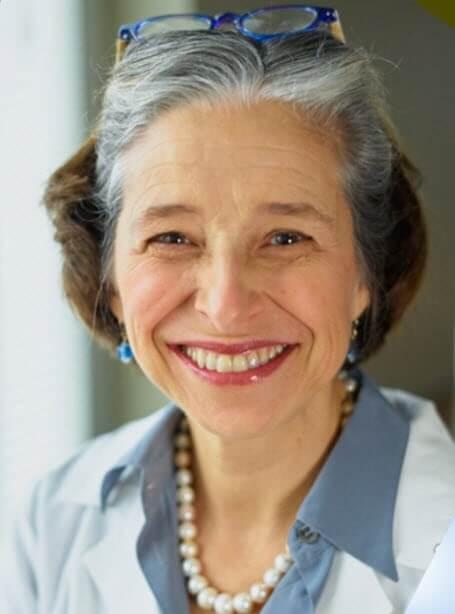
A DCRI team has begun enrollment for a clinical trial investigating the optimal evaluation strategies for people with symptoms of coronary artery disease.
PRECISE, or Prospective Randomized Trial of the Optimal Evaluation of Cardiac Symptoms and Revascularization, will enroll 2,100 patients across 100 sites in the U.S, Canada, and Europe. The trial is led by the DCRI’s Pamela Douglas, MD.
Participants in PRECISE will be randomized to receive either usual care, meaning a stress test or a cardiac catheterization, or a novel, risk-based evaluation intervention. Those in the intervention group will be evaluated for their risk of having obstructive coronary artery disease and cardiac events using the minimal risk score developed using the PROMISE trial cohort, which was also led by Douglas. That trial showed that coronary CT angiography is a viable alternative to stress testing among low- to intermediate-risk patients presenting with chest pain.
In PRECISE’s intervention arm, patients’ risk will determine the type of evaluation and treatment they will receive. The 20 percent at lowest risk will be treated medically — which includes optimally controlling risk factors, lowering blood pressure and cholesterol, and prescribing antianginal medication for chest pain. However, they will not immediately receive a diagnostic test. The other 80 percent of participants will receive a CT scan followed by fractional flow reserve (FFRct) analysis of the CT images if intermediate stenosis lesions are found.
“We wanted to have the ability to prospectively examine, in a randomized trial, whether we can safely and efficiently provide less care to very low-risk patients,” Douglas said. “Testing is expensive, so can we safely and effectively just treat the risk factors and symptoms that we’re going to need to treat anyway? We don’t do that often in medicine — it’s an unusual thing. We’re always adding a new medicine or a new treatment, so we don’t usually evaluate less (testing), with the same rigor of a randomized trial.”
The reason the team chose a graded intervention based on risk, Douglas said, is because of the very low event rates seen during the 10,000-participant trial PROMISE, in which only 1 to 1.5 percent of participants per year experienced heart attack or death. Douglas hypothesized that the team will see virtually no events in the lowest risk 20 percent population in PRECISE.
Results from PROMISE suggested that testing often occurred when it was not necessary. Of those who had CT angiograms in PROMISE, almost 90 percent did not have obstructive coronary disease, and only 4 to 8 percent ended up receiving an angioplasty or bypass surgery.
To identify the lowest risk patients, the team studied those PROMISE patients with no plaque in their coronary arteries and no events (about a quarter of the trial) and built a model to predict those patients using typical data available to a physician in the office on initial evaluation, including age, gender, and risk factors.
Once the risk score was developed, it was confirmed in a similar population in a Scottish trial called SCOT-HEART.
“Because the risk score was confirmed in a completely different population, this gives us reason to believe it is a very robust assessment,” Douglas said.
The team behind PRECISE hopes to improve the CT intervention used in PROMISE by adding FFRct, a relatively new technology. FFRct was previously studied by DCRI researchers in the PLATFORM trial.
“PLATFORM showed that when FFRct analysis was conducted on patients headed to the catheterization lab, 60 percent of the catheterizations were canceled because the CT information showed that they didn’t need to do an invasive and expensive test,” Douglas said, adding that this amounted to about a $3,000 savings per patient.
Douglas said that using both the PROMISE minimal risk score and CTA with FFRct analysis in the PRECISE population could help doctors develop a better chest pain evaluation strategy than conventional testing, which will prevent unnecessary catheterizations and reduce costs.
Douglas said she is fortunate to have the majority of the team — both faculty and operational staff — who worked on PROMISE and PLATFORM also working on PRECISE. She said the trial will benefit from the team members’ past experiences. One of those team members is project leader Beth Martinez. When PRECISE began enrollment, the team had the advantage of knowing which sites had enrolled well for PROMISE, Martinez said. Douglas reached out to the top enrolling sites personally to invite them to participate.
“There is a high volume of patients coming in with undiagnosed chest pain, so enrollment should go pretty smoothly,” Martinez said. “We have been pleased to see robust enrollment in the first few weeks.”
Another crucial part of the trial operations is the outcomes group, which consists of the outcomes call center and the economics team. The call center, led by Tina Harding and Khaula Baloch, will contact patients starting at 45 days after enrollment to assess patient-reported outcomes such as medications being taken, hospitalizations, and quality of life. Relying on the outcomes call center to gather trial data can relieve burden on sites and reduce trial costs, Martinez said. In addition, the outcomes economic Team will request hospital bills for all U.S. subjects as part of the secondary aims to compare medical costs between the groups.
Other DCRI faculty working on the project include Daniel Mark, MD; Hussein Al-Khalidi, PhD; Manesh Patel,MD, and DCRI Fellow Michael Nanna, MD. Melissa Daubert, MD, serves as the Duke site principal investigator.
PRECISE is funded by HeartFlow, the company that develops the FFRct software.